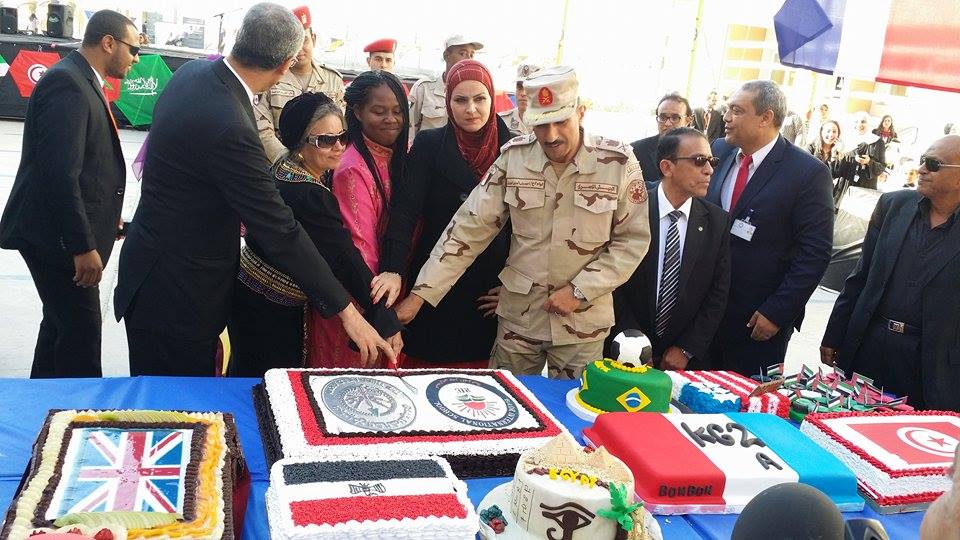
Egypt’s Minister of Foreign Affairs (MFA) Sameh Shoukry calls upon the world’s developed countries to respond positively to demands for exchanging debts for investments between creditors and debtors.
Egyptian Foreign Minister Sameh Shoukry has called for developed countries to respond to the demand of launching a global initiative between creditor and debtor countries, aimed at exchanging debts for joint investment projects that would create more job opportunities and contribute to achieving positive economic growth.
During his address to the 77th session of the United Nations General Assembly, on Saturday evening, Shoukry acknowledged Egypt’s suffering from the negative effects of sovereign debt and the worsening of public budget deficits, especially that the outbreak of the Russian-Ukrainian crisis exacerbated the economic crisis in the world.
Shoukry noted that the continuation of the negative effects of the Covid-19 Pandemic, and the successive geopolitical developments, increase the burdens placed on developing countries.
What may this mean?
Commenting on Shoukry’s call, the UN economist Ibrahim Nawar stated that “debt exchange for investment is an old policy that was widely used to alleviate the debt crisis of developing countries in the eighties of the last century. This means, in short, that banks or creditor countries obtain productive assets or In-kind service in the debtor countries in exchange for debts, which comes after the approval of the two parties, provided that an independent financial or investment evaluation institution would calculate the real value of the investment assets according to market conditions, taking into account that the debtor country is unable to repay, and that the creditors are ready to exchange their debts for these assets.”
With regard to the feasibility of such call, Nawar stressed that “this exchange may lead to alleviating the debt crisis, but it also leads to a decrease in the resources of the state’s public treasury annually with the value of the revenues it obtains from the investment assets sold by the state, and also leads to decline in the size of the national economy (that is, the economy owned by Egyptians, whether the state or the private sector).
As for how far the developed countries would respond to such call by the Egyptian official at an international meeting, Nawar said: “As for the response of the creditor countries, it is difficult to make a general judgment in this regard.”
But he added, “But I think that the creditor countries, with the exception of China, depend on the initiatives launched by the International Monetary Fund in managing global debt, and we have not yet seen initiatives from the creditor countries that are members of the G20 of rich countries, other than those for exemptions directed to the poorest countries.”
The economic expert concluded, saying: “The call that came in the context of the address of the Egyptian Minister of Foreign Affairs at the opening of the 77th session of the United Nations General Assembly confirms that managing public debt has become the focus of the government’s general policy in Egypt, and that each of the ministries is trying to It plays its part in managing public debt.”
Egypt’s debts
By the end of the 2020/2021 fiscal year, Egypt’s total debt reached $392bn. That includes $137bn in external debt, which is four times higher than in 2010 ($33.7bn). It also includes $255bn in internal debt, according to the Central Bank of Egypt, almost double domestic debt in 2010.
External debt has been growing rapidly since Abdel Fattah al-Sisi came to power in 2014. It stood at $46.5bn in 2013, then declined to $41.7bn in 2014 before surging in the following years, reaching $84.7bn in 2016, $100bn in 2018 and $115bn in 2019.
The ratio of the foreign debt to gross domestic product (GDP) is now 33.9 percent, which is relatively within safe limits according to international standards, which consider the ratio safe so long as it is below 60 percent.
However, when added to domestic debt, $79.4bn towards the end of the 2012/2013 fiscal year and now $255bn, the ratio of the total debt to GDP becomes 89.84 percent, significantly higher than safe limits.
In 2021, Egypt ranked 158th of 189 countries in the ratio of debt to GDP and 100th in debt per capita.
In January, the government debt-to-GDP ratio was 91.6 percent, up from 87.1 percent in 2013. The government says it hopes to reduce the total debt-to-GDP ratio to 85 percent in the coming three years.
However, as a goal this appears to be difficult to fulfil, given Cairo’s plans to borrow an additional $73bn through bond sales this year.
Most of the external debt between 2013 and 2022 came from the sale of bonds in the international market. It also came from borrowing from international institutions, such as the International Monetary fund (IMF), and international banks.
Most of the internal debt was incurred because of government borrowing from local banks.
According to the rating company Standard & Poor’s, Egypt is set to overtake Turkey as the largest issuer of sovereign debt in the Middle East.
The IMF has offered the Sisi government $20bn in loans since 2016, and Cairo has requested another loan since the onset of the Russia-Ukraine war.
IMF loans to Egypt since 2016 are significantly higher than the IMF’s quota, and accordingly incurs an interest rate surcharge, according to a report by the Project on Middle East Democracy (POMED). The country has become the IMF’s largest client after Argentina.
Egyptian economists express concerns that most of the debt will go towards serving older debt or repayments.
“The new financial resources need to create returns that help the state to repay the debts and the interests,” Egyptian economic analyst Mamdouh al-Wali told Middle East Eye. “We need to use the loans in the production of commodities and services, not in the repayment of debts.”
Apart from its ever-growing debt, the government has spent the bulk of its available revenues in recent years on megaprojects that “have a symbolic rather than economic value,” according to the POMED report by Robert Springborg.
The projects include “the $58bn new administrative capital in the desert outside Cairo; weapons acquisitions whose exact value is unknown but which have placed the country among the world’s top five arms purchasers; a $25bn nuclear reactor to produce power in a country with an electricity surplus; an $8bn expansion of Suez Canal capacity that has yet to generate a noticeable increase in transit dues, rising to only $5.8bn in 2020 from $5.6bn in 2017.”
Overall spending in the 2020/2021 budget was $93bn. Out of this, $30.7bn went to servicing debt.
Coupled with a huge amount of money that goes to paying the salaries of the nation’s more than six million civil servants ($18.2bn in the 2020/2021 budget), this leaves the rest of the budget to cover health, education and other services, and development.
Economists expect Egypt’s foreign and domestic debt to keep increasing in the coming period for a number of reasons.
The war in Ukraine has deprived Egypt of an important source of national income, namely tourism, as almost a third of tourist inflows in recent years came from Russia and Ukraine.
In 2019, the tourism sector brought in $13bn in revenue.
The war is also forcing Egypt to pay more for its imports, most importantly wheat, almost 80 percent of which came from the two warring countries in 2021.



